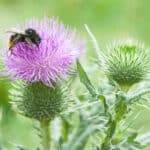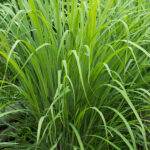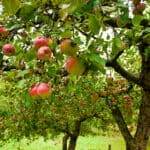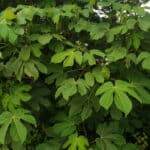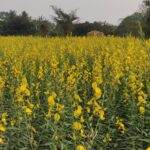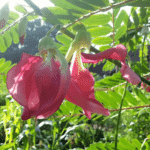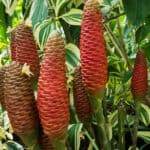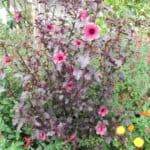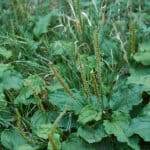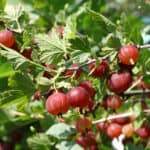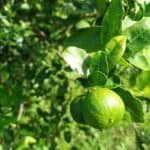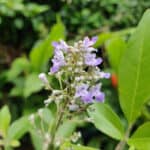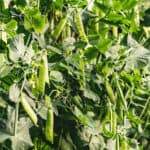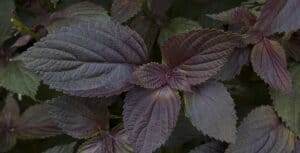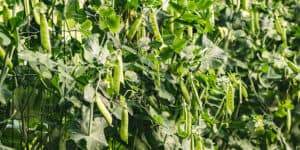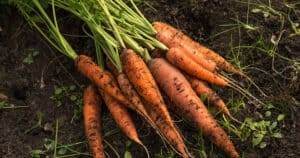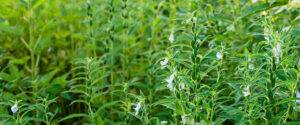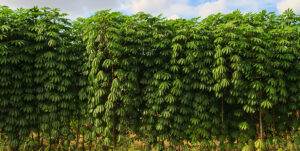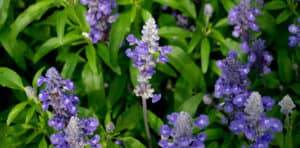Common Names: Oyster Plant, Goat’s Beard, Vegetable Oyster
Routinely misunderstood, salsify has often been labeled a weed. However, with five distinct edible vegetables available at different times of the year, this “weed” is better eaten than eradicated from the garden. Continue reading for an in-depth discussion of one of my favorite plants.
Plant Overview
Salsify is a biennial plant with a substantial tap root in the Asteraceae family. In the first year, the plant grows thick leaves in a grass-like basal rosette in the first year. The leaves have parallel veins and are slightly fleshy. Each leaf ranges from five to twenty inches long, depending on the growth stage. Deeply creased, the leaves of salsify grow in the shape of the letter V, which is a characteristic that can help you differentiate it between grasses.
The root of salsify is thick and fleshy. It can be branched or straight depending on soil composition and neighboring plants. Each part of the plant releases a milky sap called latex when torn. The salsify plant will remain a simple rosette of leaves through its first year.
In its second year, salsify grows a thick stem that bears a single flower before branching to grow additional flowers at the leaf axils below. Salsify will flower first from late spring to early summer. Hot summer weather limits continuous blooming, but in many cases, plants will bloom again in early fall.
Depending on the species, salsify will produce yellow or purple daisy-like flowers surrounded by pointed green bracts. Salsify flowers open at dawn as long as there is sun and will close by the early afternoon. While they are open, they track the sun like a sunflower. Once the flower is pollinated, it closes before opening as a round dandelion-like fluffy seed head. The seed head consists of dozens of elongated seeds attached to a plume that will catch the wind for dispersal. Each flower head can produce up to 120 seeds.
Salsify is native to the eastern Mediterranean and has been cultivated as a root crop for 2000 years. Its roots have extensive nutritional and medicinal value, but it is rarely produced here in the United States. It grows quickly and similarly to other root vegetables, like carrots, and is resistant to most common garden pests and diseases. In addition, it is easy to grow and store, making it an excellent small-scale food crop.
Functions in Permaculture
Salsify is a forgotten vegetable that has gone primarily unrecorded in permaculture literature. Yet, against these odds, salsify can bring many advantages to the permaculture garden.
Beneficial insect attraction
Like their cousins in the Asteraceae family, salsify flowers are excellent attractors of pollinators and beneficial insects. Salsify attracts pollinators to your landscape by blooming continuously from early summer through fall. Each salsify plant can sustain up to forty branching stems that end in a single flower head. That is a lot of blooms for a single plant in the herb layer of a food forest!
Loosens soil
Salsify’s thick and fleshy taproot grows up to ten inches long, jutting deep into and loosening compacted soil. When you harvest salsify root, you leave behind looser soil. The absence of the root makes room for essential soil nutrients and microorganisms to fill in the space once filled by the root.
Medicine
Salsify has been used in folk medicine to treat cancer. Though more study is needed, Salsify has been shown to have anti-cancer and antioxidant activities. In addition, salsify is a natural source of many micro-nutrients that could prevent diseases. Those looking to extract the medicinal qualities of this root should use an alcohol extraction method to harness these properties. As always, consult your doctor or a trained herbalist before using salsify medicinally.
Propagation and Planting
Of the species in the Americas, all are non-native, and many are widespread, growing all over the continental United States. Gardeners can find them growing anywhere there is disturbed ground in full sun. I have found them growing along railway tracks, roadsides, the edges of farmland, and vacant city lots.
You can purchase salsify seeds from any seed distributor. I like the popular cultivar Mammoth Sandwich Island for its slightly larger tap root. In my area, west-central Wisconsin, there is no need to purchase seeds because salsify is growing abundantly in a nearby ditch I pass daily on a morning walk. I have harvested seeds from the iconic fluffy seed head, put them in my pocket, and then scattered them in my food forest upon my return. Every spring, I can see small salsify rosettes peeking from the mulch. I must remain vigilant as I weed, as salsify can easily disguise itself as grass when young.
For kitchen gardening, salsify is grown in much the same way as a carrot or parsnip. Seed salsify in deep, rich fertile soil at least 100 days before the first frost. Salsify has a long growing season but can withstand mild frost. Plant salsify seed ½ to ¾ inch deep. Light is not needed for salsify seeds to germinate, so covering planted seeds with a light layer of mulch will not slow germination. Thin to two to four inches apart when the plants are young.
Growth and Care
Salsify has become naturalized in most of the united states because it is resilient, easy to grow, and able to withstand drought. Once it is established in your garden, you will find it low maintenance.
Salsify is frost tolerant and should be planted early before the danger of frost has passed; this will ensure your salsify is mature enough for harvest in the fall. Salsify survives in almost any soil type but would prefer light sandy soil with top-dressed compost for extra nitrogen to grow the plumpest roots. Fertilize salsify as you would any other garden vegetable.
Salsify has a long growing season; it will take over three months for the plant’s roots to reach maturity and harvestable size. Thin salsify plants three to four inches apart if growing in rows, and throw the leftover greens in a green salad.
Harvesting
If you are growing salsify for its delicious edible tap root, they are best harvested in the fall after the first freeze when most of the plant’s nutrients have been drawn back into the root for winter. Grasp the plant near ground level, and pull out the root with a steady hand, much like you would harvest a carrot. Salsify overwinters as a root vegetable and can be harvested in the early spring before they send up their flower shoot in the second year.
If harvesting the root, there isn’t that much to it. However, The entire salsify plant is edible and produces four other excellent vegetables in its second year of growth.
Other Edible Parts of Salsify
Leaves
After the salsify plant has entered its second summer, it produces a cluster of light green leaves at its center before it shoots. These fast-growing leaves are tender and taste like a heart of romaine lettuce. These leaves are excellent mixed into a green salad if you can get past the slight browning of the latex.
Shoot
The shoot of the salsify plant grows rapidly in late spring. During this time of rapid growth, the shoot is the most tender. Cut the shoot at the base of the plant when it is between 4-16 inches tall. Treat salsify shoots like asparagus in the kitchen. They are deliciously coated in olive oil, salt, and pepper and roasted in the oven.
Flower bud
In the early to mid-summer of its second year, salsify produces a tender flower bud that tastes delicious, steamed with butter or eaten fresh. Be sure to harvest the flower bud before it opens and is pollinated. Pollinated buds soon become woody and inedible. You can usually tell the difference between the two buds by looking for a small tuft of seed fluff poking out of the end of the pollinated buds.
Peduncle
My favorite part of the salsify plant is the slender peduncle which supports the flower and bud. It is the fastest-growing part of the plant and is the most tender. You will only find two or three peduncles tender enough for eating on one plant, but they make an excellent mid-day snack on breaks from weeding and watering. Excellent fresh, the peduncle can also be steamed, boiled, or roasted.
Processing and Utilizing
Salsify roots have a subtle oyster flavor responsible for their common name. They can be roasted, baked, boiled, or steamed. Cooking and pureeing the salsify root lends a silky texture to a puree that I find incomparable in other root vegetables.
The one challenge gardeners face when processing salsify is its tendency for oxidization. This tendency may be responsible for the plant being forgotten by western food culture because it makes the root challenging to transport and store commercially. However, the home gardener need not worry about this trait, as it is easily remedied.
All parts of the plant exude a milky sap called latex that can become brown and discolored when exposed to air. This discoloration does nothing to impact the plant’s flavor but is merely
cosmetic. Soaking this vegetable in water treated with lemon juice or vinegar will prevent this browning.
Salsify roots are hardy and tolerant of freezing. Store harvested roots by removing the vegetation and placing them in a root cellar with near-freezing temperatures. High humidity will keep the roots from drying out and shriveling. To avoid complex storing procedures, leave salsify in the ground until you are ready to harvest them. Although the roots will remain plump and crisp in the ground with freezing temperatures, gather them before they begin growing their shoot in the spring, which will draw all accessible nutrients from the root.
I rarely store other edible parts of the salsify plants, but that’s because I love them so much that they never make it beyond the first day in the kitchen. Each vegetable provided by the salsify plant can be steamed, sauteed, or lightly roasted and stored in the freezer for later use. Often all salsify needs is a light dressing of your oil of choice, lemon, salt, and pepper.
In Review
Salsify is an excellent vegetable with the ability to “perennialize” in many climates. Consider adding or allowing it to propagate in your permaculture landscape or kitchen garden. Salsify will benefit your ecosystem by loosening soil, attracting beneficial insects, and providing food and medicine for its human stewards. All parts of the plant are edible and worth incorporating into your family’s food culture. It’s time to re-learn this helpful plant!
References
Al-Rimawi, F., Rishmawi, S., Ariqat, S. H., Khalid, M. F., Warad, I., & Salah, Z. (2016). Anticancer activity, antioxidant activity, and phenolic and flavonoids content of wild Tragopogon porrifolius plant extracts. Evidence-Based Complementary and Alternative Medicine, 2016.
Dusabimana, T., van der Horst, B. L., de Jong, T., de Kubber, L., van Oerle, T., & Verwoerd, M. (2012). Market opportunities for growing and selling “forgotten vegetables”.
Rana, M. K., & Panghal, V. P. S. (2017). Salsify. In Vegetable Crops Science (pp. 183-190). CRC Press.
Stephens, J. M. (1994). Salsify–Tragopogon Porrifolius L. University of Florida Cooperative Extension Service, Institute of Food and Agriculture Sciences, EDIS.
Thayer, S. (54817). Salsify. In Nature’s Garden, A Guide to Identifying, Harvesting and Preparing Edible Wild Plants (pp. 471–479). essay, Forager’s Harvest.




